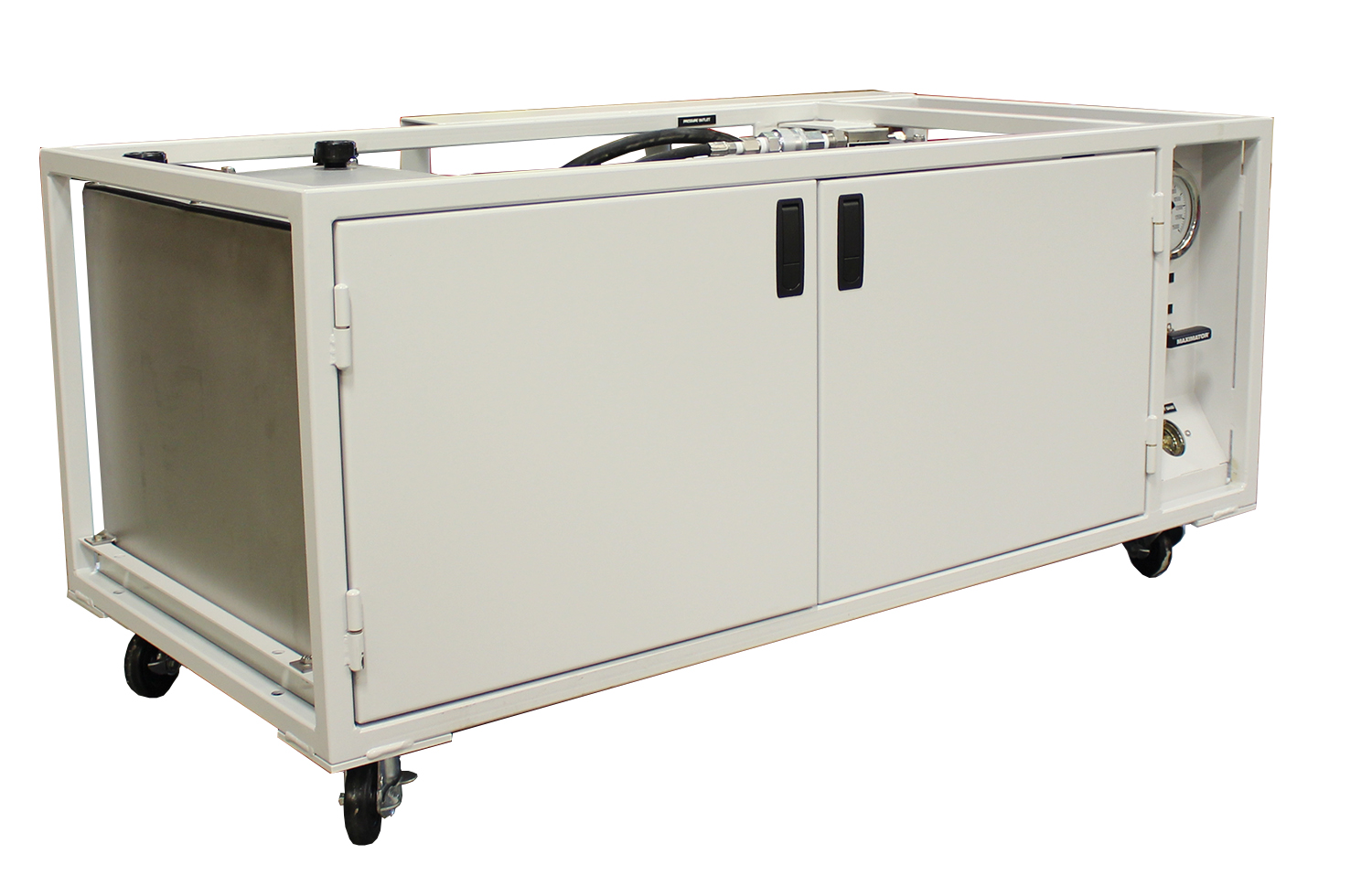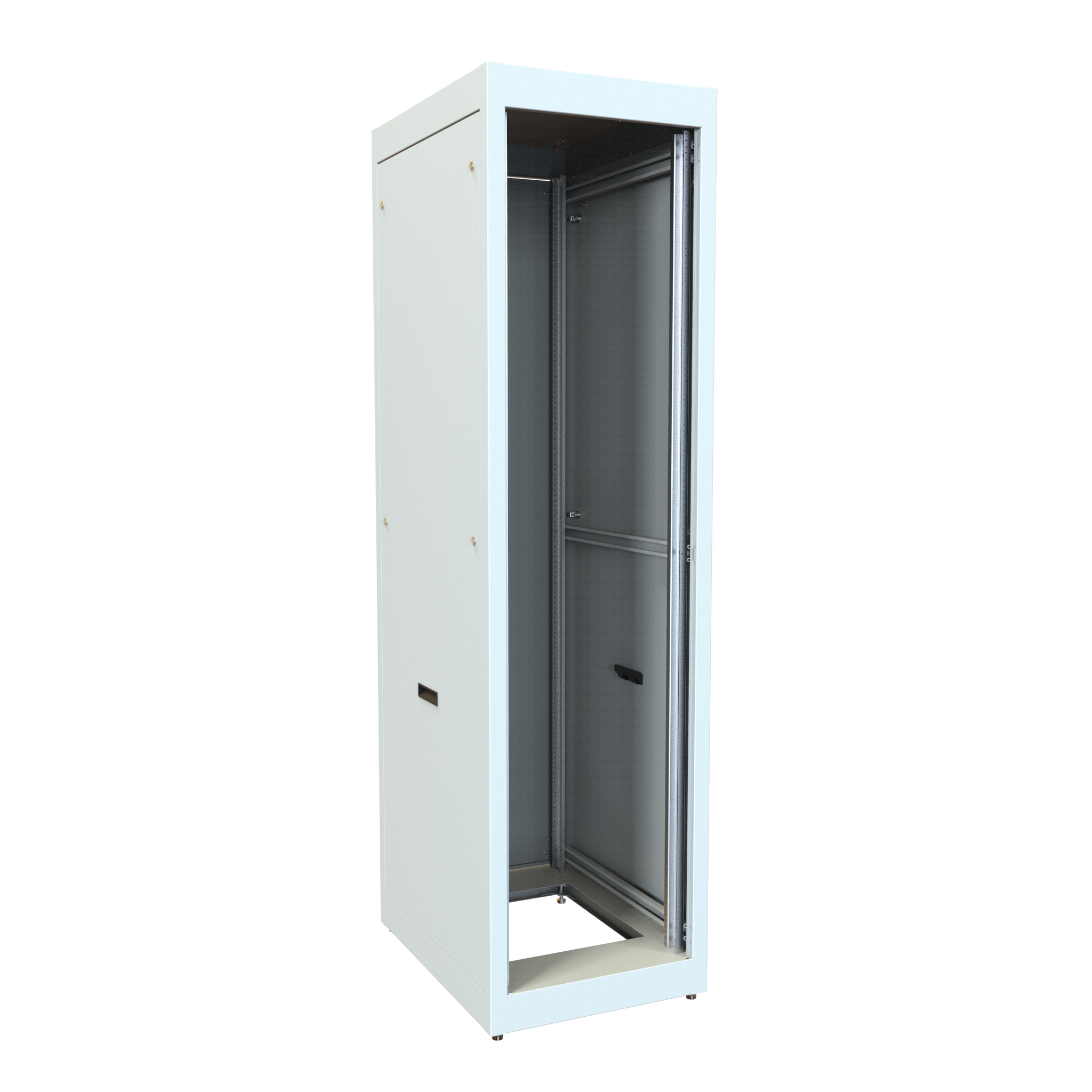Types of Test Equipment Rack Cabinets

Test equipment rack cabinets are essential for organizing and protecting sensitive electronic equipment in various settings, from laboratories and data centers to broadcast studios and telecommunications facilities. Choosing the right cabinet depends on factors such as the size and weight of the equipment, environmental conditions, and budget. Several types are available, each with its own strengths and weaknesses.
Test equipment rack cabinet – Different types of rack cabinets cater to diverse needs, offering a range of sizes, materials, and features to optimize equipment protection and accessibility. Understanding these variations is crucial for selecting the appropriate cabinet for a specific application.
Rack Cabinet Construction Materials and Sizes, Test equipment rack cabinet
Test equipment rack cabinets are typically constructed from steel or aluminum, each offering distinct advantages. Steel cabinets are generally more robust and durable, providing superior protection against physical damage. Aluminum cabinets, on the other hand, are lighter and often preferred in applications where weight is a significant concern, such as mobile installations. Standard rack sizes include 19-inch (EIA-19) and 23-inch (EIA-23) widths, with varying depths and heights available to accommodate different equipment configurations.
| Cabinet Type | Material | Standard Width | Key Features |
|---|---|---|---|
| Standard Steel Rack Cabinet | Steel | 19-inch | High durability, cost-effective, wide range of sizes and accessories available. |
| Lightweight Aluminum Rack Cabinet | Aluminum | 19-inch | Lightweight, corrosion-resistant, suitable for mobile applications. |
| Wall-Mount Rack Cabinet | Steel or Aluminum | 19-inch | Space-saving design, ideal for smaller installations. |
| Enclosed Server Rack Cabinet | Steel | 19-inch | Enhanced security features, improved environmental control with ventilation and locking doors. |
Rack Cabinet Mounting Options
Securely mounting equipment within a rack cabinet is paramount for preventing damage and ensuring operational stability. Several mounting options are commonly used:
Various methods are employed to securely fasten equipment within the cabinet, ranging from simple shelf installations to more sophisticated systems.
Common mounting options include:
- Shelves: Adjustable shelves allow for flexible equipment placement, accommodating varying heights and depths of devices.
- Cage Nuts: These threaded nuts are installed in pre-punched holes in the rack’s mounting rails, providing a convenient and secure method for attaching equipment using screws.
- Rails: These provide a structured framework for mounting equipment, often utilizing cage nuts or other fastening mechanisms.
- Mounting Brackets: Specialized brackets are available for specific equipment types, ensuring proper alignment and secure attachment.
Environmental Considerations for Test Equipment Rack Cabinets
Maintaining a stable and controlled environment within the cabinet is crucial for optimal equipment performance and longevity. Factors to consider include:
Environmental factors significantly impact the reliability and lifespan of equipment housed within the cabinet. Proper consideration of these factors is crucial.
- Ventilation: Adequate ventilation is essential to prevent overheating, particularly in cabinets housing high-power equipment. This often involves strategically placed vents and fans.
- Temperature Control: Maintaining a consistent temperature within the operating range of the equipment is critical. This might involve using climate-controlled rooms or incorporating cooling systems within the cabinet.
- Humidity Protection: Excessive humidity can lead to corrosion and malfunction. Cabinets in humid environments might require dehumidification systems or sealed enclosures.
- Dust Protection: Dust accumulation can hinder cooling and cause equipment failure. Filters and regular cleaning are necessary to maintain a dust-free environment.
Selecting the Right Test Equipment Rack Cabinet

Choosing the appropriate test equipment rack cabinet is crucial for ensuring the safety, efficiency, and longevity of your testing environment. The wrong choice can lead to equipment damage, safety hazards, and inefficient workflow. Careful consideration of several key factors will guide you to the optimal selection.
Factors to Consider When Selecting a Test Equipment Rack Cabinet
The selection process involves comparing several critical factors to find the best fit for your specific needs. The following table summarizes key considerations and facilitates a comparative analysis.
| Factor | Description | Impact on Selection | Example |
|---|---|---|---|
| Weight Capacity | The maximum weight the cabinet can safely support. | Insufficient capacity can lead to structural failure. Overestimating leads to unnecessary expense. | A cabinet rated for 1000 lbs is suitable for heavy equipment, while a 500 lb cabinet is appropriate for lighter setups. |
| Power Requirements | The total power (amps and voltage) the cabinet can provide through its power distribution units (PDUs). | Insufficient power will prevent equipment operation; excessive capacity is wasteful. | A cabinet with multiple 20-amp circuits is suitable for power-hungry equipment; a smaller cabinet with fewer circuits suffices for low-power devices. |
| Equipment Compatibility | Dimensions (rack units, depth), mounting options (e.g., front and rear), and ventilation requirements of the cabinet must match the equipment. | Incompatibility will prevent proper installation and airflow. | Ensure the cabinet’s depth accommodates the deepest piece of equipment. Check for sufficient rack units (1U, 2U, etc.) to house all devices. |
| Environmental Considerations | Temperature control, humidity control, and security features (locking doors, etc.) are essential for equipment protection. | Extreme temperatures or humidity can damage sensitive equipment. Security prevents unauthorized access. | Consider a climate-controlled cabinet for sensitive electronics or a cabinet with locking doors for secure storage in a shared environment. |
Calculating Rack Space and Power Needs
Accurate calculation of rack space and power requirements prevents overspending and ensures sufficient capacity.
- Inventory Equipment: List all equipment to be housed, noting each item’s rack unit (U) height and power consumption (volts, amps, watts).
- Calculate Total Rack Space: Sum the U heights of all equipment. Add extra space for cabling and future expansion (10-20% is a good rule of thumb).
- Calculate Total Power Consumption: Sum the power consumption (watts) of all equipment. Convert to amps using the formula:
Amps = Watts / Volts
(assuming a power factor of 1 for simplification). Add a safety margin (10-20%) to account for peak loads.
- Select Cabinet: Choose a cabinet with sufficient rack space (U) and power capacity (amps) to accommodate the calculated totals.
Hypothetical Scenario and Cabinet Selection
Let’s consider a scenario where we need to house a network switch (1U, 100W), a server (4U, 500W), a power supply (1U, 200W), and a patch panel (1U, 50W).
1. Rack Space Calculation: 1U + 4U + 1U + 1U = 7U. Adding a 20% margin, we need approximately 8.4U, rounding up to 9U of rack space.
2. Power Calculation: 100W + 500W + 200W + 50W = 850W. Assuming a 120V system: 850W / 120V ≈ 7.1A. Adding a 20% margin, we need approximately 8.5A. We’d likely need a cabinet with at least a 10A circuit.
3. Cabinet Selection: Based on these calculations, we would need a cabinet with at least 9U of rack space and a power distribution unit capable of supplying at least 10A at 120V. Additional features like ventilation and locking doors would be desirable depending on the environment. A 12U cabinet with a 15A PDU would provide ample headroom for future expansion.
